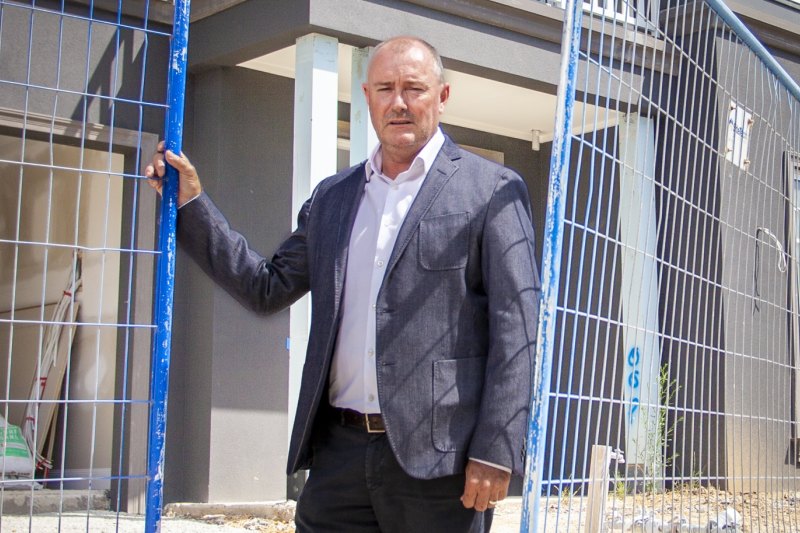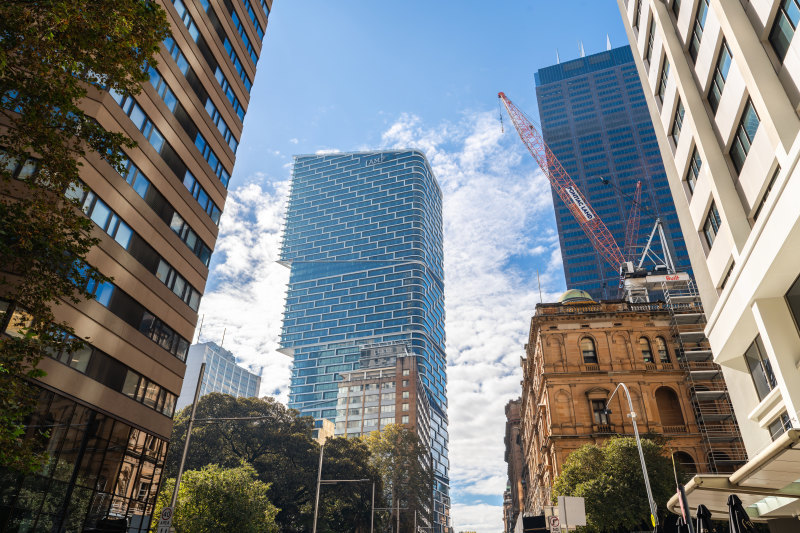The figures that show why building costs are no longer going through the roof
Massive price rises for building materials appear to be in the rearview for now as new data shows costs in the past year have slowed to single-digit growth for all products.
Easing costs have boosted the construction industry, improving certainty and build times. But experts say difficulties finding construction workers meant building and renovating could still be expensive and difficult.
The category with the largest price falls was steel products, which was down 6.8 per cent in the year to June on ABS data. The category of timber, board and joinery followed, becoming 1.1 per cent cheaper over the same period. But specific products in both categories recorded larger cost reductions.
Structural timber and steel beams recorded the biggest price falls, down 7.9 per cent and 6.9 per cent, respectively, followed by plywood and board, down 3 per cent. In the category of plumbing, which slid 0.8 per cent overall, plastic pipes and fittings recorded the biggest reduction in price, down 3.1 per cent.
The falling costs were a far cry from March 2022, when prices were growing at a double-digit rate for products in the steel and timber categories, up 42.1 per cent and 20.6 per cent year-on-year, respectively.
Materials were still more expensive than before the pandemic, though. Costs were up almost 70 per cent for some products since December 2019, such as terracotta tiles (up 65.5 per cent), timber windows (up 65 per cent) and electric cables and conduits (up 59.9 per cent).
Housing Industry Association chief economist Tim Reardon said the rate of cost increases had returned to pre-pandemic levels for most products.
“The rise in material prices is back to normal,” Reardon said. “We saw a 1.1 per cent increase in [material] prices in the year to June.
“In short, we are through that cycle. Labour remains in short supply but not as bad as it was a few years ago.”
Prices were still increasing for some items. The category of ceramic products was up 4.5 per cent in the year to June. That included products such as clay bricks, which were up 9.8 per cent. Meanwhile, other materials were up 5 per cent, which included items such as paint and other coatings (up 9.1 per cent).
“Anything that’s energy intensive is continuing to increase in price, that includes brick and tiles,” Reardon said. “Because of regulatory changes we’re seeing copper increase in price. We’re moving to lead-free copper.”
Reardon said the relatively stable construction materials prices had energised the industry.
“We’ve seen the time it takes to build a home fall from around 18 months back to what it was pre-pandemic, which has given builders the confidence to compete on price again and as a result, we’ve seen a very price-competitive market in 2024,” he said.
Simonds Homes chief executive David McKeown said volume builders were offering discounts on house and land packages, the cost of which were no longer increasing by the thousands every week.
“The moderation of the input costs … has meant we’re able to hold pricing,” he said. “The other aspect is builders are now competing for work much more strongly.”
PRD chief economist Dr Diaswati Mardiasmo said stable prices had helped the construction industry.
“It’s better in the sense that even though it’s still expensive, it hasn’t doubled the price and the shock isn’t there any more,” he said. “They just know brick and steel will be more expensive … it’s now just expected.”
Mardiasmo said the certainty was better for consumers too: that is, if they could get a loan to build or renovate at all.

“It’s a little bit of both because people understand the costs better now, and they can budget better, but at the same time it is still a cost constraint … it will impact the amount of money you need to get from the bank if you need a loan.”
McKeown said a massive shortage of tradies was also weighing on the industry, and would for the foreseeable future.
“Labour costs … were a big issue for us in the back end of COVID and that is still an issue,” he said. “We still have not solved the issue of skilled labour in this industry. So we do need to address this nationally as this still will continue to be a constraint on us and other industries.”
Reardon said, in some cases, clients were getting less bang for their buck.
“During times of inflation, the shrinkflation story plays out, and we see that in the construction industry as well.
“We’re seeing smaller bathrooms and [in kitchens] a lower level of specification and fit outs.”
Reardon said home owners had begun renovating kitchens earlier in their tenure and had trended towards larger kitchens during the pandemic, but this trend had since reversed.
We thought you might like
States
Capital Cities
Capital Cities - Rentals
Popular Areas
Allhomes
More










